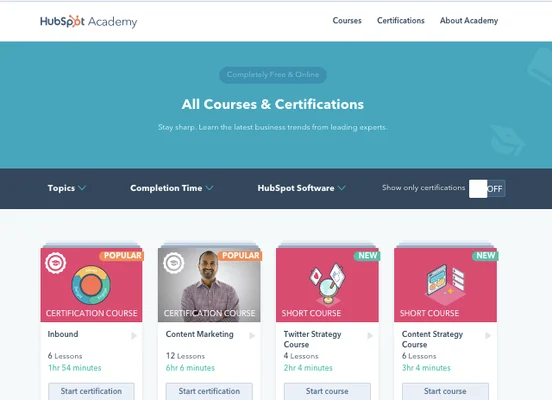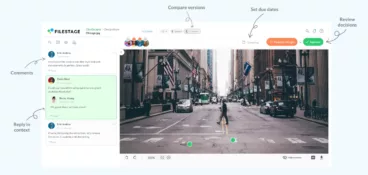In the fast-paced world of online marketing, getting your content game strong is key for businesses that want to really connect with their audience. Setting up a killer content marketing process isn’t rocket science, but it’s a game-changer for boosting brand visibility, engaging customers, and hitting business goals.
This article delves into the complexities of developing a content marketing process that not only speaks to your target audience but also seamlessly aligns with your broader business goals.
Whether you’re a seasoned marketer looking to refine your content marketing efforts or a newcomer seeking to establish a solid foundation in creating content, make sure to stick around.
This article serves as a comprehensive guide to constructing and sustaining an effective content marketing process in today’s dynamic digital environment.
So let’s dive in!
What is content marketing process?
The content marketing process is a strategic approach to creating, distributing, and promoting valuable, relevant, and consistent content to attract and engage a target audience.
It involves several key steps and activities to ensure that the content aligns with the goals of the business and effectively reaches and resonates with the intended audience.
Why do you need an effective content marketing strategy?
An effective content marketing strategy will help you achieve various business objectives and maintain a competitive edge.
Here are some key reasons why your business will benefit from effective content marketing strategies:
1. Builds brand awareness
Content marketing helps in creating and increasing brand awareness. By consistently producing and distributing valuable content, you’ll be able to increase brand visiblity which will boost your brand recognition and trust.
2. Attracts and engages the target audience
An effective content marketing strategy is tailored to the needs and preferences of the target audience. By creating content that resonates with your audience, your business will attract and engage potential customers. This engagement can lead to increased brand loyalty and customer retention.
3. Drives traffic to the website
High-quality and relevant content can attract organic traffic to your business’s website. Content optimized for search engines (SEO) can improve your website’s visibility on search engine results pages, leading to increased organic traffic and potential customer conversions.
4. Generates leads
Content marketing is an effective way to generate leads. By offering valuable content, your company can capture the interest of potential customers and encourage them to provide their contact information. This creates opportunities for further engagement and conversion into customers.
5. Supports the sales process
Well-crafted content can educate potential customers about products or services, address common questions or concerns, and guide them through the buyer’s journey. This supportive role of content marketing can influence purchasing decisions and facilitate the sales process.
6. Enhances SEO and search rankings
Search engines reward fresh, relevant, and high-quality content. A robust content marketing strategy that includes keyword optimization and regular content updates can improve a website’s search engine rankings. This, in turn, makes it easier for potential customers to find the business online.
7. Demonstrates industry expertise
Consistently producing valuable and informative content establishes your business as an authority in the industry. This demonstration of expertise builds trust with the audience, making them more likely to choose the business over competitors.
8. Fosters customer loyalty
Content marketing is not only about acquiring new customers but also about nurturing existing relationships. Regularly providing valuable content to current customers can strengthen their loyalty, encourage repeat business, and turn them into advocates for your brand.
Seven steps for establishing an efficient content marketing process
Having in mind that the stages represent a repeatable cycle that’s constantly in motion, there are seven key steps to a successful content marketing strategy:
- Content inventory of your current library
- Thoughtful and deliberate content research
- Realistic but challenging content goal setting
- Flexible content planning
- Content production
- Repeated cross channel content promotion
- Analyzing content marketing process
Now, let’s dive a little deeper into each step.
1. Content inventory
Before you start to create content, it’s vital to be aware of what you have so you can see what’s worked in the past. You can even update or repurpose old content for republishing.
Create a detail list of all the data of your existing content, including but not limited to:
- Title / H1 Heading
- Author
- Categories / Tags
- Stage in the customer journey (Awareness/Consideration/Decision)
- Content Type (Branding/Lead-generating)
- Content Format (Blog, Guest blog, Case study, Podcast, etc.)
- Location (URL link)
- Publication date
- Word count
- Image Count
- Hyperlink Count
- Analytics
- Analytics
Depending on your personality, you may find this part of the cycle tedious but just know that it’s worth it in the end. Best case scenario? You learn something new. Worst case scenario? None.
2. Content research
Whether it’s your sales team or your customers, conduct external research to understand the needs of your customers and the problems they need solving.
Come up with the most accurate customer personas as possible. Figure out what past content was most successful with your customers in the past—plan to do more of that for each customer persona. Keep in mind that nothing remains constant, particularly when it comes to behavioral sciences. So always be prepared to change things up!
You can consider AI content creation tools like BuzzSumo, or SurferSEO to help you with this step. They offer smart content and SEO suggestions for creating a more insightful content that will rank.
3. Content goal setting
What is it you want to get out of your published content? If you just wanted to push words out into the world wide web, you could always start a vanity blog or spout proverbs on social media points. But if you’re willing to put thought and time into creating a content strategy, then you clearly have some business goals in mind.
Is it increased traffic to your pages that you’re after? Higher conversion rate? A certain number of leads per month?
Perhaps you’re at the stage where bringing awareness and focusing on your branding is the priority. Set your goals and revisit them often while keeping yourself in check every so often and asking, “Why content marketing?”
4. Content planning
The quality of your content marketing plan can make or break your content strategy.
This could be anything from keyword planning for search engine optimization (SEO) or studying trends or hot topics in the news. It’s also a viable strategy to piggyback on previous posts that have worked well for you.
Plan your Editorial Calendar out as far as possible. Do this with the understanding that dates or details may change at a moment’s notice.
5. Content production

Embrace the content creation process!
Keep on message and speak the language of your audience. Never underestimate the importance of choosing the right title for your piece of content for digital publishing. Also, be sure to have another set of eyes (or two) help in the editing process and bring in other creative artists (designers, videographers, etc.) as needed.
There is good content marketing software out there that helps you do all of this once you get a good rhythm going.
6. Content promotion
Once you’Re done publishing content, it’s important to figure out which distribution channels work best for you by trying all of them for a few-month period. You can promote each channel manually or publish multi-channel using a content marketing tool.
- Owned: Your own websites, social media platforms, and newsletters
- Earned: Your ambassadors and back-linking opportunities
- Paid: Advertising and PPC
Content distribution is just as important as the actual content creation process. After all, you do want to reach a wide audience. If not, then you’d probably just be writing in your personal journal!
7. Content analyitics
The work doesn’t end just because your content is published.
Whether it’s Google Analytics or your own data crunching methods, be sure to keep an eye out for patterns in your data and conversion rates. How well is your content doing? Don’t look for results overnight. Content marketing is a marathon and not a sprint to the finish line.
Three excellent content marketing examples
1. Red Bull’s power of content

Source: usatoday.com
Red Bull is a prime example of a brand that has mastered content marketing. They go beyond traditional advertising by creating and sponsoring a wide range of extreme sports and adventure-related content.
The Red Bull Stratos project, where Felix Baumgartner jumped from the edge of space, is a notable example. Red Bull consistently produces high-quality videos, articles, and social media content that align with their brand image of energy, excitement, and adventure.
2. HubSpot’s inbound marketing

Source: blog.hubspot.com
HubSpot, a marketing and sales software company, is a pioneer in inbound marketing. They provide a wealth of educational content in the form of blogs, e-books, webinars, and more. HubSpot’s content focuses on helping businesses improve their marketing, sales, and customer service efforts.
By providing valuable information and solutions to their target audience, HubSpot attracts and retains customers. Their “HubSpot Academy” offers free courses on various aspects of inbound marketing, further establishing them as an authority in the field.
3. Dove’s real beauty campaign

Dove’s Real Beauty campaign is a powerful example of content marketing that addresses societal issues. Instead of focusing solely on marketing the product features, Dove created a campaign that challenges traditional beauty standards and encourages women to embrace their natural beauty.
The campaign includes videos, social media content, and a website that features real women with diverse body types and skin tones. By promoting a positive message and sparking conversations around self-esteem and beauty standards, Dove not only engages its audience but also reinforces its brand values.
Final thoughts
Content marketing strategy is not just built to push products or services. Your biggest challenges can be overcome as long as your messaging is aligned with your values. Don’t look for shortcuts when it comes to high-quality content.
Be sure your inbound marketing content is:
- Relevant and well-researched
- Optimized for search engines and lead captures
- Interactive and actionable
Then settle in for the long haul and continue to invest in your content marketing process!








